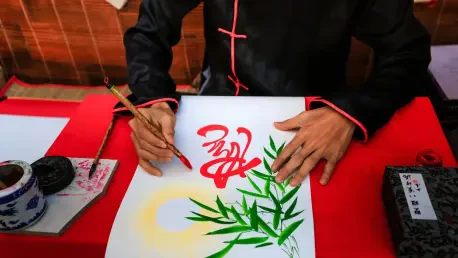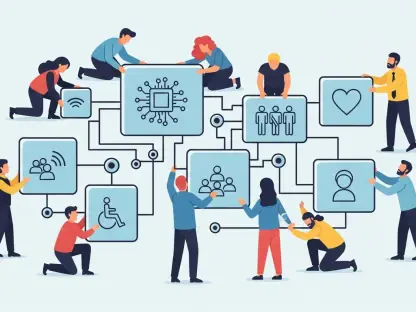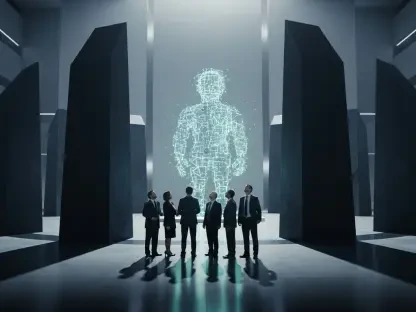In an era where artificial intelligence and digital platforms shape nearly every facet of communication and creativity, there is a growing need to rediscover practices that ground us in human expression. Chinese calligraphy, an ancient art form steeped in cultural and philosophical depth, emerges as a powerful antidote to the detachment often felt in today’s tech-saturated world. Unlike the rapid, automated output of AI-generated content or the mechanical nature of typing, calligraphy invites a slower, more deliberate engagement with the act of writing. This tactile process not only reconnects individuals with their thoughts and emotions but also offers a unique form of creative freedom that stands apart from the algorithms and digital interfaces dominating modern life. As society grapples with the challenges of maintaining authenticity amid technological advancements, this traditional practice provides a meaningful way to cultivate mindfulness and personal connection, reminding us of the value inherent in hands-on creation.
The Cognitive and Sensory Divide
In the rush of digital communication, where efficiency often trumps depth, Chinese calligraphy offers a striking contrast through its emphasis on cognitive engagement. Studies have shown that handwriting, particularly with tools like a brush, activates broader areas of the brain compared to typing on a keyboard. This heightened mental activity fosters a deeper connection to the creative process, as each stroke requires intention and focus. The act of forming characters by hand isn’t merely about producing text; it’s a holistic experience that shapes how thoughts are processed and expressed. In a world where AI can churn out content in seconds, this slower, more thoughtful approach stands as a reminder of the human capacity for nuanced creation. Calligraphy challenges the notion that speed equates to value, instead prioritizing the quality of engagement over the quantity of output, and in doing so, it rekindles a sense of agency over one’s creative endeavors.
Beyond cognitive benefits, calligraphy immerses practitioners in a multi-sensory journey that digital tools simply cannot replicate. The feel of a soft brush gliding across Xuan paper, the scent of ink, and the visual transformation of blank space into art all contribute to a deeply personal experience. This process demands a clear state of mind and a level of sincerity that contrasts sharply with the often distracted, fragmented nature of online interactions. Each movement of the brush becomes a meditative act, requiring patience and self-discipline, qualities that are often sidelined in the pursuit of instant results through technology. Unlike the uniformity of typed text or AI-generated designs, every calligraphic work bears the unique imprint of its creator’s emotions and focus at that moment. This individuality serves as a powerful counterpoint to the homogenized output of digital systems, reinforcing the idea that true creativity stems from human touch and intention.
Historical Roots and Contemporary Value
Chinese calligraphy carries a legacy that stretches back centuries, revered not just as an art form but as a pathway to personal and moral development in Chinese culture. Historically, it has been seen as a discipline that cultivates the mind and refines character, with each stroke reflecting the practitioner’s inner state. Esteemed for its aesthetic elegance, calligraphy also embodies philosophical principles that encourage introspection and balance. In today’s fast-paced, tech-driven environment, this ancient practice retains its significance by offering a way to step away from constant digital stimulation. It provides an anchor, a method to reconnect with values of patience and mindfulness that are often eroded by the relentless pace of modern life. Far from being a relic of the past, calligraphy serves as a bridge between tradition and the present, reminding society of the enduring importance of nurturing the human spirit through deliberate, meaningful actions.
The relevance of calligraphy extends further as a subtle critique of the over-reliance on digital technology and artificial intelligence in shaping creativity. Many scholars highlight the risks of prolonged exposure to online environments, noting how it can diminish attention spans and impair the ability to engage in deep, reflective thinking. Automated systems, while efficient, often embed biases or inaccuracies that go unnoticed, diluting the authenticity of the content they produce. In contrast, calligraphy demands active participation and critical awareness, grounding individuals in the physical act of creation. This hands-on approach counters the passive consumption encouraged by digital tools, fostering a renewed sense of control over one’s expressive output. By engaging with this traditional art, practitioners can resist the superficiality that sometimes accompanies technological convenience, finding instead a space for genuine connection and thoughtful communication.
Adapting an Ancient Art to Modern Needs
Contemporary artists are breathing new life into Chinese calligraphy, demonstrating its adaptability to address the challenges of the current digital age. Figures like Pan Jianfeng, who operates from Finland while staying rooted in Chinese traditions, exemplify this innovative spirit by blending conventional techniques with experimental methods. His work prioritizes ambiguity and dialogue over definitive conclusions, encouraging viewers and participants to engage in shared interpretation. Through initiatives like mindfulness-focused workshops, Pan creates environments where individuals can escape the overload of digital information and reconnect with a slower, more intentional mode of expression. This modern take on calligraphy doesn’t just preserve tradition but reimagines it as a tool for fostering community and personal reflection, proving that ancient practices can offer solutions to today’s pressing need for mental clarity and authentic interaction.
Moreover, calligraphy’s alignment with sustainability adds another layer to its modern appeal, setting it apart from the environmental costs associated with AI and digital technologies. While generative AI consumes significant energy resources, contributing to a larger ecological footprint, calligraphy relies on organic materials and human effort, embodying a more sustainable form of creativity. This aspect resonates with growing calls for responsible innovation, where the impact of practices on the planet is as important as their immediate benefits. Beyond environmental considerations, the stillness and peace derived from calligraphy provide a much-needed respite from the restlessness induced by constant connectivity. Engaging in this art form allows for a recalibration of priorities, shifting focus from relentless productivity to meaningful presence, and in doing so, it offers a blueprint for balancing technological progress with personal well-being.
Reflecting on a Timeless Practice
Looking back, the exploration of Chinese calligraphy revealed a compelling case for its role as a bastion of creative freedom amid the dominance of artificial intelligence. Its ability to engage the mind and body in ways that digital tools couldn’t match stood out as a profound counterbalance to the often impersonal nature of automated content. The historical reverence for this art, combined with its modern reinventions by artists pushing boundaries, underscored a journey of rediscovery that many embraced. The tactile, meditative process of wielding a brush on paper proved to be more than an artistic endeavor; it became a quiet rebellion against the superficiality of digital overload. As society reflected on these insights, the path forward seemed to lie in integrating such grounding practices into daily life, ensuring that technology served humanity without eclipsing the essence of personal expression. Encouraging broader access to calligraphy through educational programs and community initiatives could help sustain this balance for future generations.









